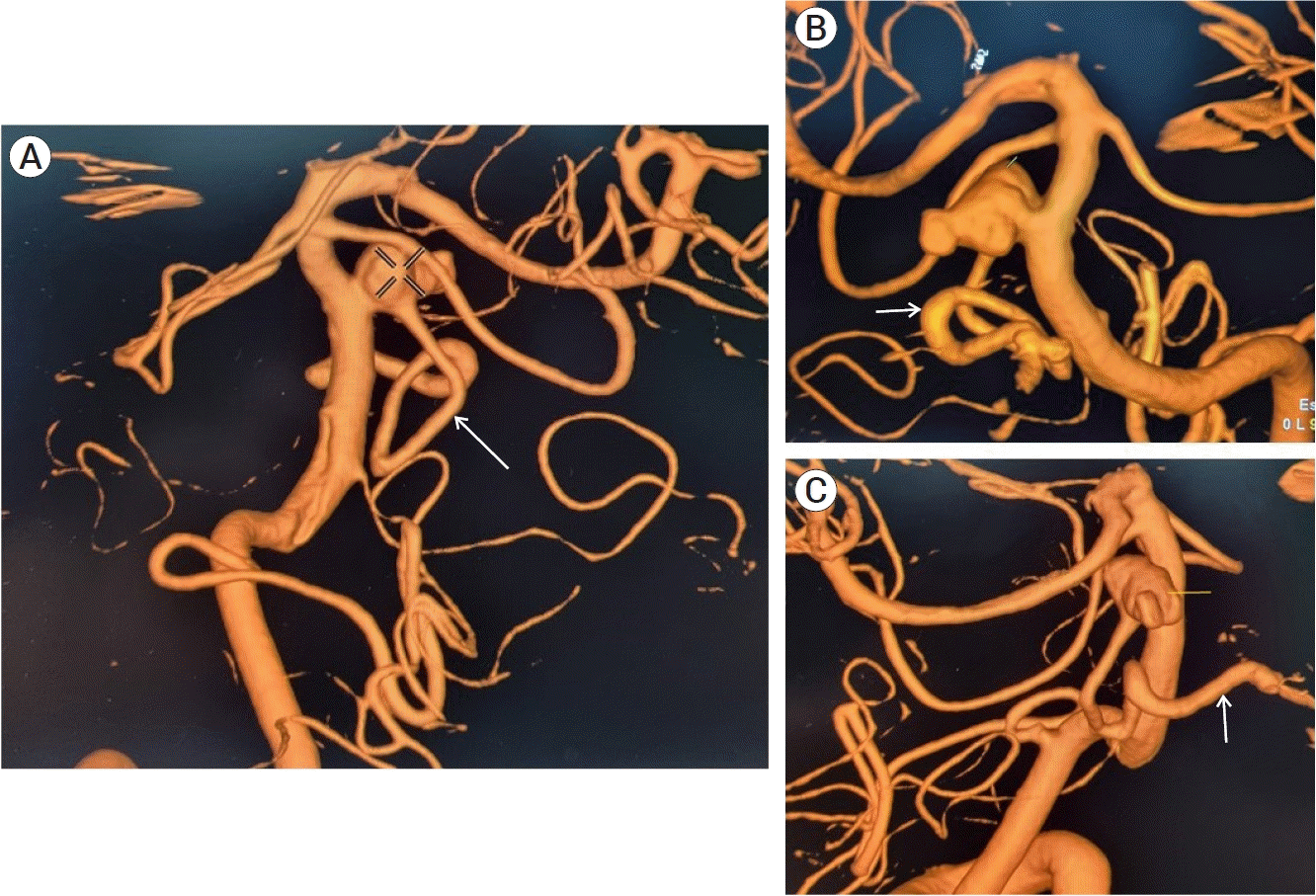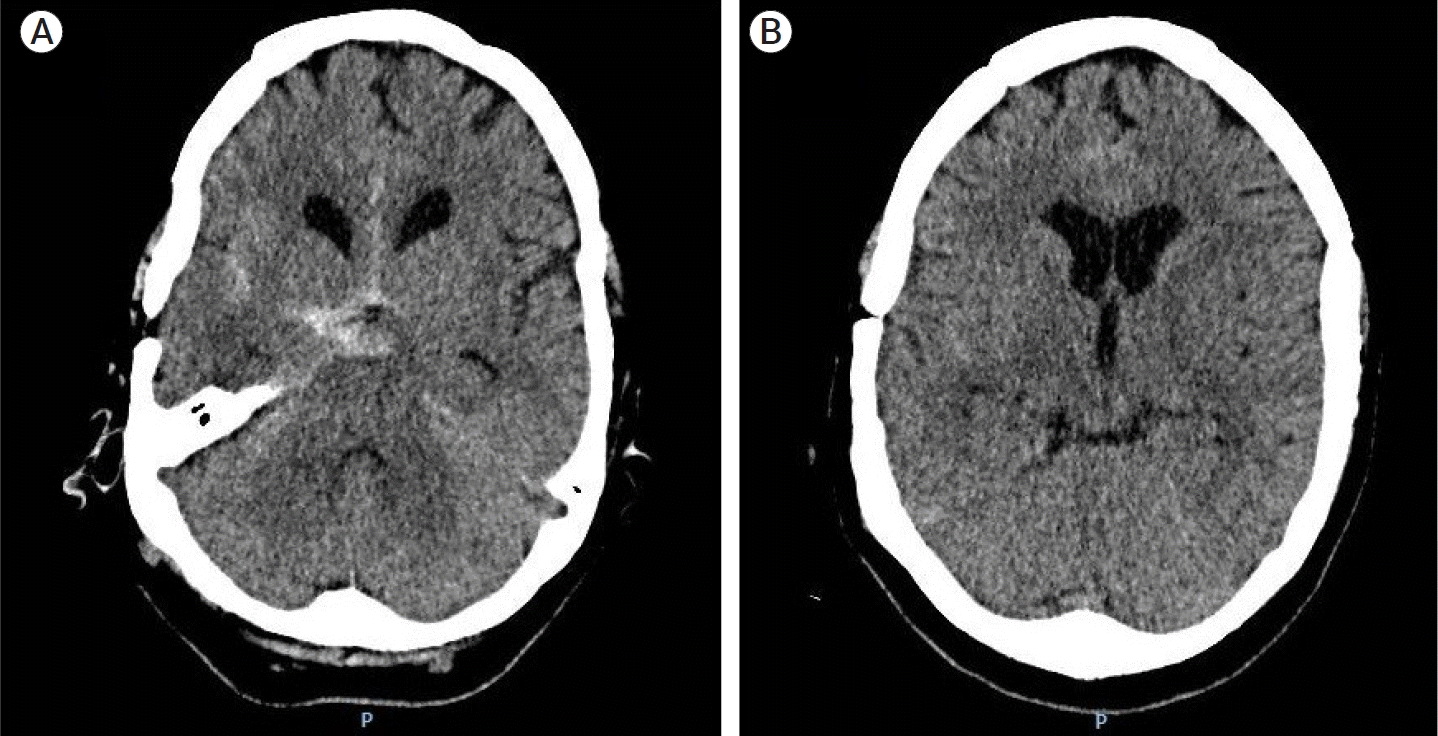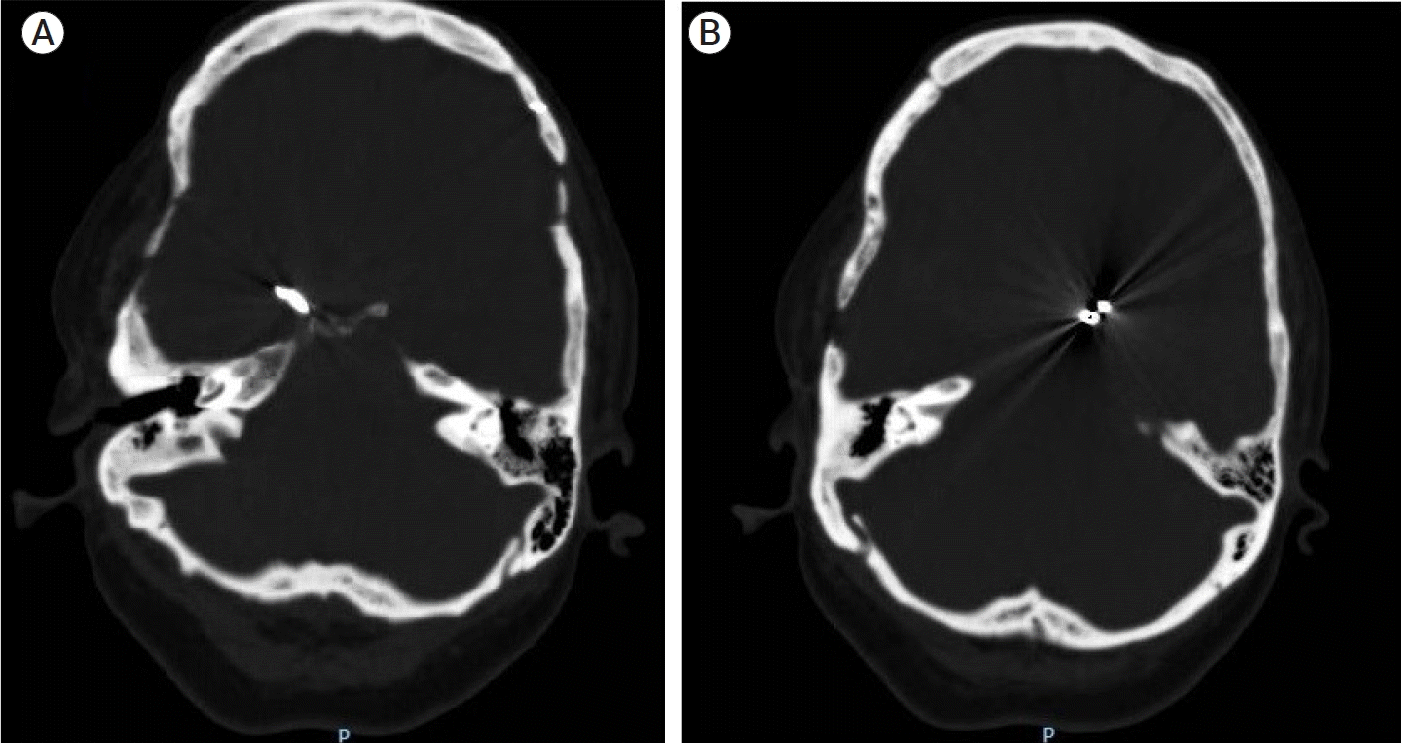1. Bosco D, Consoli D, Lanza PL, Plastino M, Nicoletti F, Ceccotti C. Complete oculomotor palsy caused by persistent trigeminal artery. Neurol Sci. 2010; Oct. 31(5):657–9.

2. Burns SK, Brewer KJ, Jenkins C, Miller S. Aneurysmal subarachnoid hemorrhage and vasospasm. AACN Adv Crit Care. 2018; Summer. 29(2):163–74.

3. Diana F, Mangiafico S, Valente V, Wlderk A, Grillea G, Colonnese C, et al. Persistent trigeminal artery aneurysms: case report and systematic review. J Neurointerv Surg. 2019; Dec. 11(12):1261–5.

4. Fingerlin TJ, Rychen J, Roethlisberger M, Taub E, Mariani L, Guzman R, et al. Long-term aneurysm recurrence and De novo aneurysm formation after surgical treatment of unruptured intracranial aneurysms: a cohort study and systematic review. Neuro Res. 2020; Apr. 42(4):338–45.

5. Gokbel A, Secer M, Polat O. Assessment of risk factors in De novo aneurysm development. Brain Circ. 2020; Sep. 6(3):208–10.
6. Jersey AM, Foster DM. Cerebral aneurysm, in StatPearls [Internet]. Treasure Island (FL): StatPearls Publishing;2022.
7. Komiyama M. Persistent trigeminal artery and its variants. Interv Neuroradiol. 2019; Dec. 25(6):635–37.
8. Lai LT, O’Neill AH. History, evolution, and continuing innovations of intracranial aneurysm surgery. World Neurosurg. 2017; Jun. 102:673–81.

9. Lawton MT, Vates GE. Subarachnoid hemorrhage. N Engl J Med. 2017; Jul. 377(3):257–66.

10. Lee KS, Zhang JJY, Nguyen V, Han J, Johnson JN, Kirollos R, et al. The evolution of intracranial aneurysm treatment techniques and future directions. Neurosurg Rev. 2022; Feb. 45(1):1–25.

11. Nasr DM, Fugate J, Brown RD Jr. The genetics of cerebral aneurysms and other vascular malformations. In : Sharma P, Meschia JF, editors. Stroke Genetics. Springer;2017. p. 53–78.
12. Petridis AK, Kamp MA, Cornelius JF, Beez T, Beseoglu K, Turowski B, Steiger HJ. Aneurysmal subarachnoid hemorrhage. Dtsch Arztebl Int. 2017; Mar. 114(13):226–36.

13. Samuel N, Radovanovic I. Genetic basis of intracranial aneurysm formation and rupture: clinical implications in the postgenomic era. Neurosurg Focus. 2019; Jul. 47(1):E10.

14. Sato H, Haraguchi K, Takahashi Y, Ohtaki S, Shimizu T, Matsuura N, et al. Flow-diverter stent for an unruptured aneurysm at the junction of the internal carotid artery and persistent primitive trigeminal artery: case report and literature review. World Neurosurg. 2019; Dec. 132:329–32.

15. Shah KA, Katz JM. Ruptured persistent trigeminal artery-basilar artery junction aneurysm: case report and review of literature. World Neurosurg. 2020; Jan. 133:159–62.

16. Toth G, Cerejo R. Intracranial aneurysms: review of current science and management. Vasc Med. 2018; Jun. 23(3):276–88.

17. Tyagi G, Sadashiva N, Konar S, Aravinda HR, Saini J, Shukla D, et al. Persistent trigeminal artery: neuroanatomic and clinical relevance. World Neurosurg. 2020; Feb. 134:e214–23.

18. Xu Z, Rui YN, Hagan JP, Kim DH. Intracranial aneurysms: pathology, genetics, and molecular mechanisms. Neuromolecular Med. 2019; Dec. 21(4):325–43.

19. Zenteno M, Lee A, Moscote-Salazar LR. Rupture of persistent primitive trigeminal artery-basilar artery aneurysm managed with stent-assisted coiling. Asian J Neurosurg. 2018; Jul-Sep. 13(3):817–21.






 PDF
PDF Citation
Citation Print
Print







 XML Download
XML Download